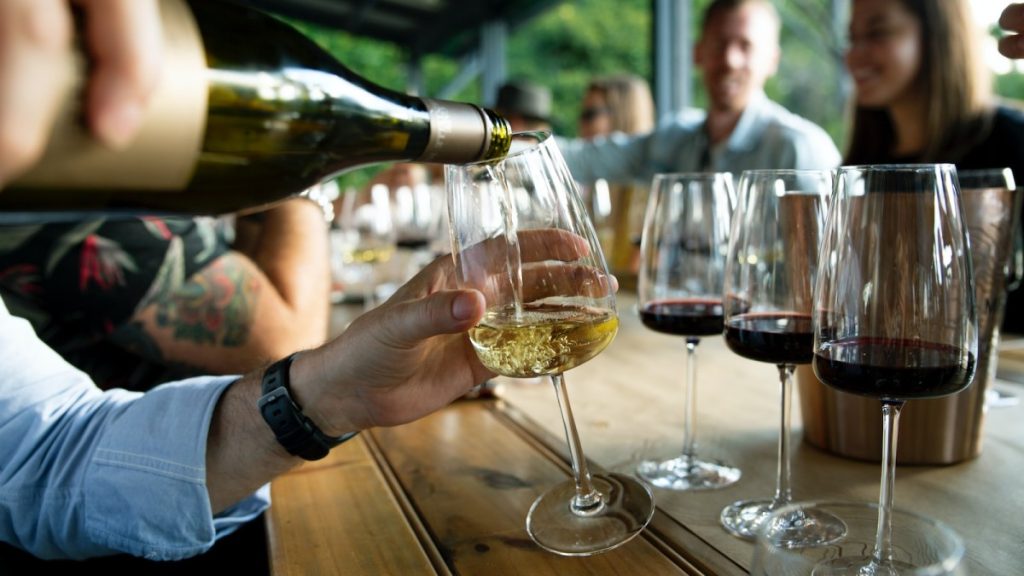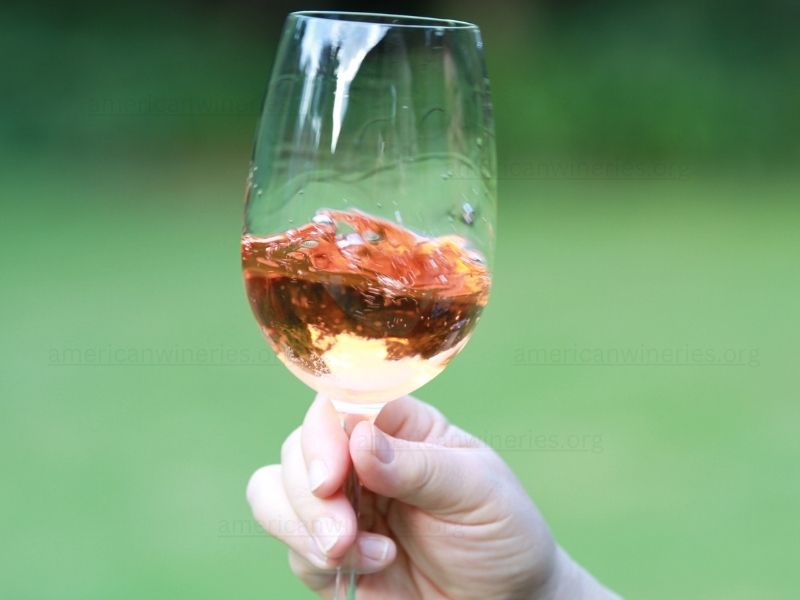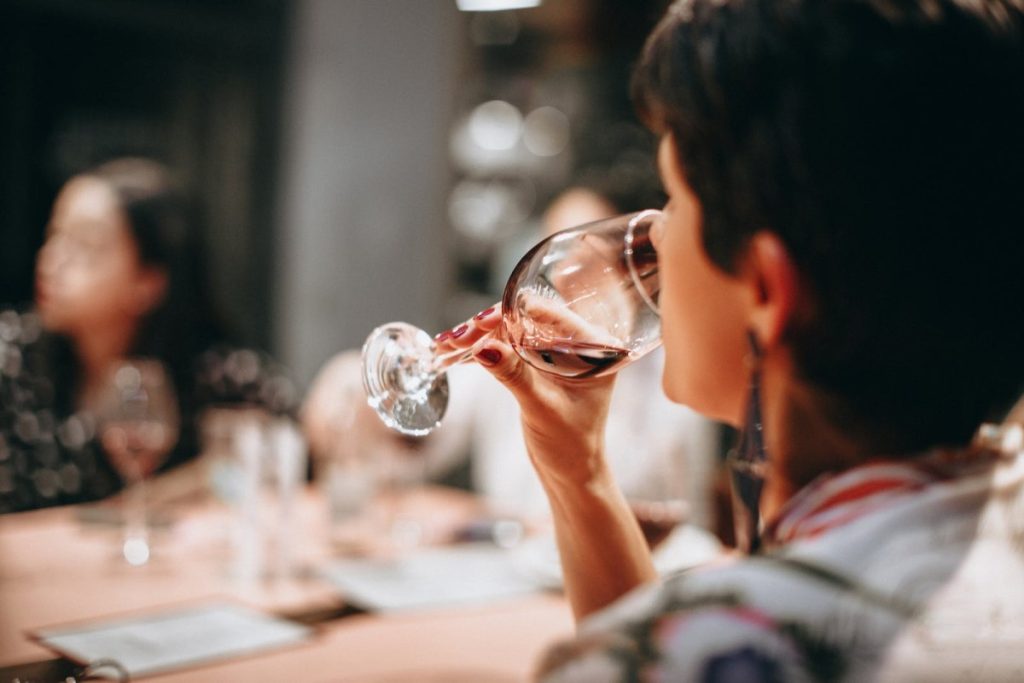If you’ve ever wanted to elevate your experience with wine and become more knowledgeable about the flavors and aromas that come with each sip, then our guide is the perfect read for you. We will take you through the fundamentals of wine tasting, helping you unlock the secrets behind this ancient and sophisticated art. Whether you’re a novice seeking to enhance your palate or simply fascinated by the world of American wineries, this comprehensive guide will provide you with the necessary skills to confidently navigate the vast and intriguing world of wine tasting. So grab a glass, get ready to swirl, sniff, and sip, and let the journey to becoming a wine connoisseur begin!

Why Wine Tasting?
Enhancing Appreciation for Wine
Wine tasting is not just about getting a buzz or having a drink. It is a unique experience that allows you to truly appreciate and understand the intricacies of wine. By taking the time to engage in wine tasting, you can develop a deeper appreciation for the art of winemaking and the various flavors and aromas that different wines offer.
Developing Sensory Skills
Engaging in wine tasting can also help you develop and refine your sensory skills. As you train your palate to identify different flavors and aromas in wine, you become more attuned to your senses. This can enhance your ability to detect subtleties in flavors and aromas in other foods and beverages as well.
Understanding Wine Flavors
One of the key benefits of wine tasting is gaining a better understanding of the wide range of flavors that wine can offer. From fruity and floral notes to earthy and spicy undertones, each wine has its unique flavor profile. By actively tasting and evaluating different wines, you can better understand and appreciate the nuances of their flavors.
The Basics of Wine Tasting
Choosing the Right Glassware
Choosing the right glassware for wine tasting is essential to fully experience the aromas and flavors of the wine. Opt for a glass with a large bowl and a tapered rim, as this helps concentrate the aromas towards your nose. Additionally, using a clear glass allows you to observe the wine’s color and clarity.
Preparing the Wine
Before diving into the tasting, it is important to prepare the wine properly. Begin by uncorking the bottle and allowing the wine to breathe for a few minutes. This helps to enhance the aromas and flavors. If you are tasting a younger red wine, you may consider decanting it to further open up the flavors.
Evaluating Appearance
The first step in the actual tasting process is evaluating the appearance of the wine. Tilt your glass against a white background and observe the color and clarity. Note whether the wine is clear or hazy, and observe its color intensity. This initial evaluation can provide insights into the age and quality of the wine.
Swirling the Wine
Purpose of Swirling
Swirling the wine serves two main purposes during the tasting process. Firstly, it helps to oxygenate the wine, which releases its aromas and enhances its flavors. Additionally, swirling coats the glass with a thin layer of wine, which allows you to observe its “legs” or “tears.” These are the streaks that form on the side of the glass and can give you an indication of the wine’s viscosity.

Techniques for Swirling
To swirl the wine effectively, gently grip the stem of the glass and give it a circular motion. This motion helps to agitate the wine and bring out its aromas and flavors. It is important to swirl gently to avoid spilling the wine or staining the tablecloth with its vibrant colors.
Observing the Wine’s Color and Viscosity
After swirling the wine, take a moment to observe its color and viscosity. Note the hue, whether it is pale or deep, and any variations in color towards the rim. Pay attention to how the wine clings to the side of the glass and how quickly it forms legs. This visual examination provides valuable insights into the wine’s age, grape variety, and winemaking techniques.
Sniffing the Wine
Importance of Aromas
The aromas of wine play a crucial role in our overall perception and enjoyment of it. They contribute to the complex flavors and can even evoke memories and emotions. By focusing on the aromas during wine tasting, you can better appreciate the full sensory experience that wine has to offer.
Proper Techniques for Smelling
To fully experience the aromas of the wine, take a moment to swirl the wine gently to release its scents. Then, bring the glass to your nose and take short, quick sniffs. Avoid inhaling too deeply, as this can overwhelm your senses. Take your time to identify and savor the different aromas that emanate from the wine.
Identifying Different Aromas
Each wine has its own unique set of aromas. Through practice and experience, you can learn to identify a wide range of scents, from fruity and floral notes to earthy and herbal undertones. Keep a mental note of the different aromas you detect, and try to associate them with familiar smells or flavors. This exercise will enhance your ability to describe and appreciate the nuances of different wines.

Sipping the Wine
Taking Notice of Different Flavors
Once you have observed the wine’s appearance and enjoyed its aromas, it’s time to take a sip. Let the wine coat your entire mouth, moving it around to ensure it touches all areas of your tongue. Pay attention to the different flavors that you experience, such as sweetness, acidity, and any underlying notes of fruit, spice, or oak.
Understanding the Wine’s Structure
In addition to the flavors, it is important to consider the structure of the wine. This refers to its overall balance, body, and texture. Is the wine light-bodied or full-bodied? Does it have a smooth and velvety texture or a more crisp and refreshing mouthfeel? By assessing the wine’s structure, you can gain insights into its quality and pairing potential.
Evaluating Taste Intensity
When evaluating the taste intensity of a wine, consider the overall impact it has on your senses. Is it light and delicate, or does it have a powerful and lingering presence? Assessing the taste intensity helps you understand the wine’s complexity and can guide your preferences when selecting future bottles.
Common Wine Tasting Terms
Acidity
Acidity refers to the crispness or sharpness of a wine’s taste. Wines with high acidity often have a refreshing and lively character, while low-acidity wines can feel rounder and softer on the palate.
Tannins
Tannins are compounds found in the skins, seeds, and stems of grapes, as well as in oak barrels. They contribute to the wine’s structure and can create a dry and slightly bitter sensation in the mouth. Young red wines typically have higher tannin levels, whereas white wines and older red wines often have softer and more integrated tannins.
Body
Body refers to the weight and mouthfeel of a wine. Light-bodied wines feel delicate and ethereal, while full-bodied wines have a richer and more substantial presence on the palate. Medium-bodied wines fall somewhere in between.
Finish
The finish is the lingering taste and sensation that remains after swallowing the wine. A long finish indicates a wine with greater complexity and depth, while a short finish suggests a wine that fades quickly.
Balance
Balance refers to the harmony between the different components of a wine, such as acidity, sweetness, tannins, and alcohol. A well-balanced wine has these elements working seamlessly together, creating an enjoyable and integrated taste experience.
Pairing Wine with Food
Understanding Complementary Flavors
Pairing wine with food enhances the overall dining experience by creating complementary flavors. A general rule of thumb is to match lighter wines with lighter dishes and more robust wines with richer, heavier fare. For example, a crisp Sauvignon Blanc pairs well with seafood or salads, while a bold Cabernet Sauvignon complements grilled meats and hearty stews.

Matching Wine and Food Intensity
Consider the intensity of both the wine and the dish when pairing. A delicate and subtle wine may be easily overwhelmed by strongly flavored foods, just as a powerful and full-bodied wine can overpower delicate dishes. The goal is to find a balance where both the wine and the food can shine.
Exploring Different Wine Varieties
Red Wines
Red wines encompass a wide array of flavors and styles. From the fruity and approachable Pinot Noir to the bold and robust Cabernet Sauvignon, there is a red wine to suit every taste preference. Other popular red wine varieties include Merlot, Syrah, and Zinfandel, each offering its own unique set of aromas and flavors.
White Wines
White wines are known for their refreshing and vibrant qualities. Varieties such as Chardonnay, Sauvignon Blanc, and Riesling offer a range of flavors, from zesty citrus to floral and tropical notes. White wines are often enjoyed chilled and make excellent choices for pairing with seafood, poultry, or light pasta dishes.
Rosé Wines
Rosé wines, with their beautiful hues ranging from pale pink to deep salmon, offer a delightful middle ground between red and white wines. They are generally light and refreshing, with fruity flavors and a crisp finish. Rosé wines are perfect for warm-weather occasions and pair well with a variety of foods, from salads to grilled vegetables.
Sparkling Wines
Sparkling wines, such as Champagne and Prosecco, add a touch of celebration to any occasion. With their lively bubbles and vibrant acidity, these wines offer a refreshing and festive experience. Sparkling wines are versatile and can be enjoyed on their own or paired with a wide range of foods, from oysters to desserts.
Discovering Wine Regions
Napa Valley, California
Napa Valley is known as one of the premier wine regions in the United States. Famous for its Cabernet Sauvignon and Chardonnay, Napa Valley offers picturesque vineyards and wineries that welcome visitors for tours and tastings. Whether you are a wine enthusiast or a casual wine drinker, exploring Napa Valley is an unforgettable experience.
Willamette Valley, Oregon
Located in the Pacific Northwest, the Willamette Valley is celebrated for its exceptional Pinot Noir wines. The region’s cool climate and volcanic soils create the ideal conditions for producing high-quality Pinot Noir grapes. In addition to wine tasting, visitors to the Willamette Valley can also enjoy beautiful landscapes, outdoor activities, and farm-to-table dining experiences.
Finger Lakes, New York
The Finger Lakes region in upstate New York is renowned for its world-class Rieslings. The cool climate and glacier-carved lakes provide optimal growing conditions for this aromatic white wine variety. Visitors to the Finger Lakes can explore the numerous wineries, take scenic drives along the lakeshores, and indulge in the region’s farm-to-table cuisine.
Advancing Your Wine-Tasting Skills
Attending Wine Tasting Events
One of the best ways to advance your wine-tasting skills is by attending wine-tasting events. These events provide opportunities to taste a variety of wines, learn from experts, and interact with other wine enthusiasts. Whether it’s a local wine festival or a guided tasting at a vineyard, attending these events can expand your palate and deepen your understanding of wine.
Joining Wine Clubs
Joining a wine club is another excellent way to advance your wine-tasting skills. Wine clubs typically send members a selection of wines regularly, allowing them to explore and discover new varieties and regions. Many wine clubs also provide tasting notes and educational materials, helping you learn more about each wine and expand your knowledge.
Tasting Comparisons
Engaging in tasting comparisons can be a fun and educational way to enhance your wine-tasting skills. Select two or more wines of the same variety or from different regions and taste them side by side. Compare their aromas, flavors, and overall characteristics, noting any similarities or differences. This exercise helps train your palate and allows you to develop a deeper understanding of the nuances of wine.
By taking the time to learn and practice basic wine-tasting techniques, you can enhance your appreciation for wine, develop your sensory skills, and gain a deeper understanding of its flavors. Whether you are a wine enthusiast or just starting your wine journey, wine tasting is a pleasurable and educational experience that opens up a world of possibilities to explore. Cheers to your wine-tasting adventures!
© 2023 by Americanwineries.org. All rights reserved. No part of this document may be reproduced or transmitted in any form or by any means, electronic, mechanical, photocopying, recording, or otherwise, without prior written permission of Americanwineries.org.

Leave a Reply